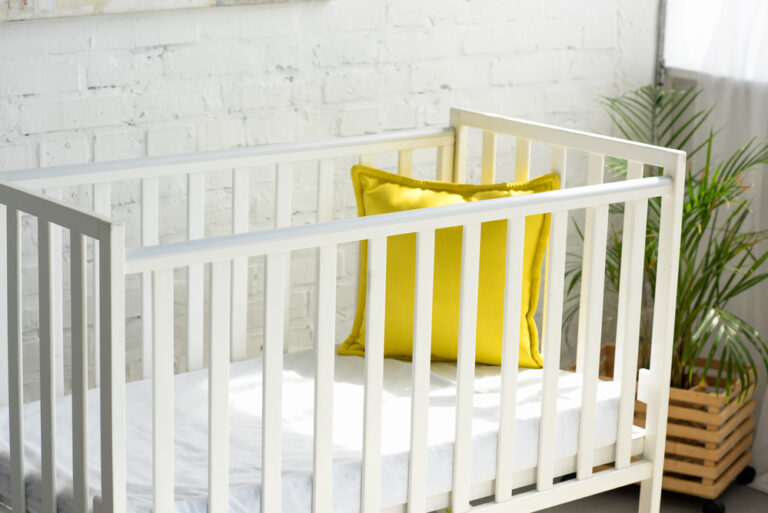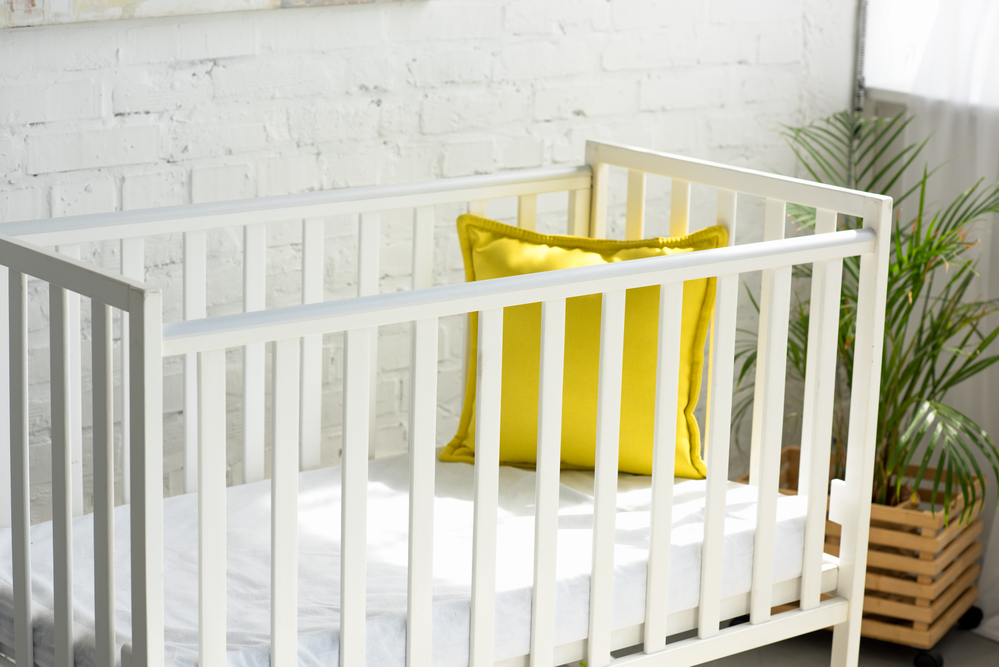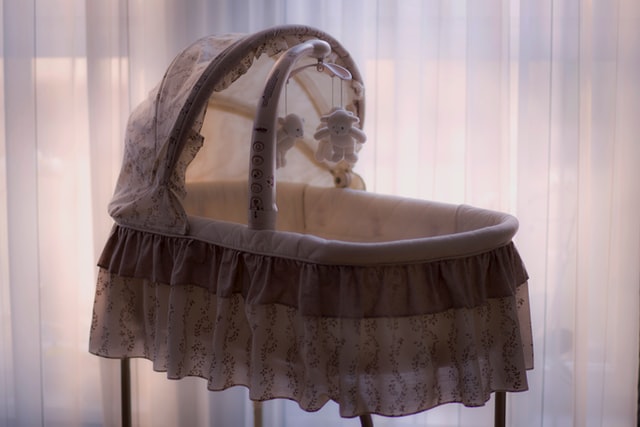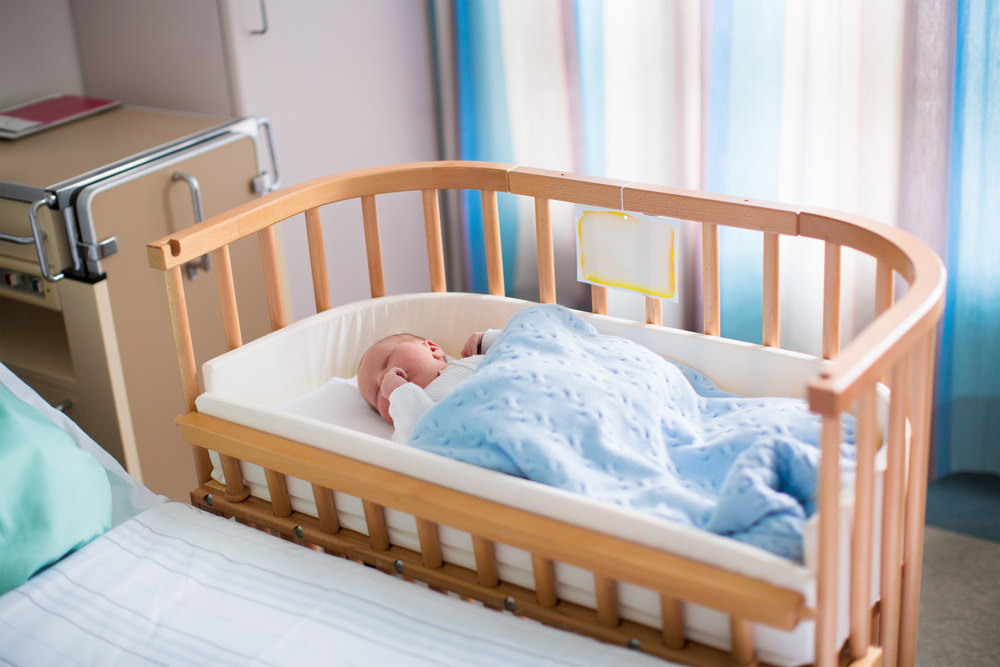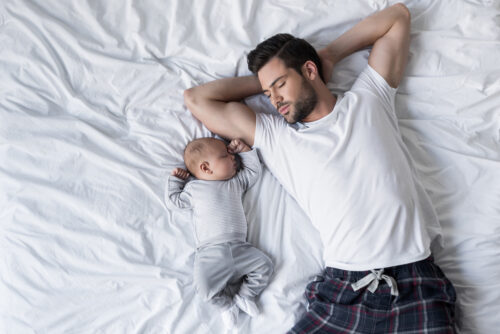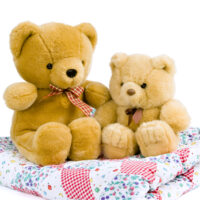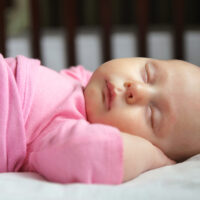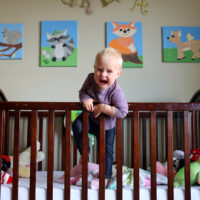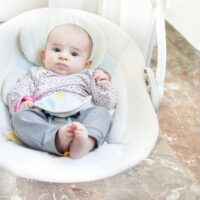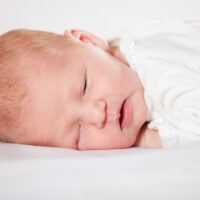Most babies use a crib for the first two years of their life. The crib needs to keep your baby safe and support their weight. However, do you know how much weight a crib can hold?
Moms want to know if a crib is designed to hold a child for the first few years of their life. Cribs aren’t cheap, but they should be safe and durable. Find out now just how long weight-wise you will be able to keep a crib for your baby.
How Much Weight Can A Crib Hold?
Would you be surprised to find out cribs are only made to hold up to 50 pounds? The same goes for a toddler bed, too.
The average crib weighs forty pounds or more, so the weight limit of only 50 pounds seems wrong by math alone. What’s really happening is that most babies and toddlers do not weight more than 50 pounds, so companies do not test cribs to hold more than this weight.
Why would a company only test for the weight limit and put such a low limit on a crib? To prevent people from putting anything other than their baby in the crib. Sometimes people may want to put multiple babies in a crib or keep an older toddler in a crib, but this isn’t safe.
A crib should hold only one baby, so cribs only measure weight based on what’s safe, not what’s possible when it comes to infant sleeping furniture. Some cribs are rated only to hold 35 pounds, which is often less than the weight of the crib itself.
Moreover, most cribs don’t give the max capacity but the recommendation for max weight. The wording is key. Safety is the first priority, and cribs are not meant to hold more than a mattress and a baby.
With many cribs functioning by converting from a crib to a toddler bed to a full bed, the weight limit adjusts with each stage. Suddenly the same crib that could only support 50 pounds can support a teenager when it’s converted to a full-size bed with side supports and a heavier mattress.
Materials play a big part, too. Usually, wood products are made to hold more weight because wood is so durable.
Finally, while the real weight limits are not known because of testing, we do know the recommended weight limit for a crib is between 35 and 50 pounds. The same weight limit applies to toddler beds.
Common Crib Materials
Most cribs are made of wood or metal because they are sturdy and safe. The stronger wood varieties are American Beech, ash, maple, birch, and oak. Even pine can hold a more than decent amount of weight, like two adults. Most wood furniture can support hundreds of pounds, even softwood.
Nowadays, cribs are often made of hardwoods like maple, oak, cherry, ash, mahogany, birch, or beech. To prevent splinters and improve the appearance, the wood is stained, painted, or finished. Some cribs have unsafe finishes, which is why you may consider a crib with a GreenGuard Gold certification.
The best cribs boast one or more stabilizer bars to make the frame more rigid and add to the weight capacity. Most cribs are made to have no visible screws or nails to keep babies from finding a way to harm themselves. Also, some cribs may have locking wheels or casters for stability and to help you move the crib with ease.
Next, cribs have a metal mattress frame often with stiff springs for more comfort. Crib mattress frames should not be made of weak material like plastic ,as it needs to support a baby and a mattress. Not all cribs have metal springs as some instead have wooden frames or even wooden boards.
Finally, cribs often have a teething rail or a plastic covering on the top or side or rails to protect the ribs and baby’s teeth from teething. Cribs may also use glue, which is not as strong as screws or nails.
Know Your Crib’s Restrictions
The US Consumer Product Safety Commission (CPSC) has strict guidelines in place for crib safety. You can rest assured that any crib you can purchase brand new in America meets stringent guidelines.
Drop-side cribs, while convenient, are falling out of style because of safety concerns and are actually now banned.
If you want to be doubly sure of your crib’s safety, make sure the slats and corner posts are no more than 2 3/8 inches apart. Wider slats can pose an entrapment danger. Also, check the corner posts are flush without any decor, as little hands can get stuck.
Furthermore, the mattress should fit snuggly without any gaps on any side. Babies are inquisitive and do not know how to protect themselves, and any gap can cause a problem.
Shake the crib once assembled to ensure it’s not wobbly and that it doesn’t have any loose parts. Most importantly, read the crib manual carefully. Follow every step of installation and make sure no parts are leftover.
Do not use a crib with missing parts. Keep all the pieces for future conversions in a bag with the manual in a safe place. Always read the warnings, as it could save your baby’s life.
Height Restrictions
Just as crib weight limits are heavily regulated, so are the heights for a crib. Once your baby reaches the height of 35 inches, you need to turn the crib into a toddler bed. The guidelines are set to create a safe sleep space because babies shorter than 35 inches usually cannot crawl out.
Higher-end cribs often come with multiple mattress height settings.
- Stage 1 is the highest setting intended for newborns under five months who are unable to roll or push themselves up.
- Stage 2 is the middle mattress setting and it’s for babies who can roll, sit, or push up. Usually, this is for babies ages 5 to 8 months.
- Stage 3 is the lowest mattress setting and it’s for babies who can pull themselves up to a standing position.
- Stage 4 is a toddler bed, and it’s for toddlers over 35 inches who can climb or crawl.
Some very precocious babies can crawl earlier than 35 inches (raises the hand of experience). As soon as your child can climb out of their crib, it’s no longer safe, and you need to move them to a toddler bed.
The US requires a minimum distance of 26 inches between the top of the lowest support and the top of the crib side rails. Most mattresses are between five and six inches thick. With this added thickness, the actual distance between the top of the mattress and the top of the rails is either 20 or 21 inches. Your baby can get seriously injured from a fall from this height.
Typical Baby and Toddler Weights
If your baby needs to be out of a crib by 50 pounds or 35 inches, then you need to know roughly when to expect a transition.
Mind you, all babies gain weight and height differently, but charts can help you to get a better idea of what to expect.
12 months old – 19 to 21 pounds – 29 to 30 inches
15 months old – 21 to 22 pounds – 30.5 to 31 inches
18 months old – 22 to 24 pounds – 31 to 32.5 inches
21 months old – 24 to 25.5 pounds – 33 to 33.5 inches
24 months old – 26 to 28 pounds – 34 to 35 inches
As you can see, most babies will outgrow their crib in height before they outgrow the crib in weight. Fifty pounds is most definitely enough weight for a child under the age of two.
Crib Alternatives
If you find the weight and height limits confining or find cribs to be dangerous, you have other options you can use instead of a crib. Take a look at the best options available.
Playard
A playpen or playard will often save you money, and some offer storage. However, the best advantage is they are portable, and you can fold them for easy storage. Playards are also closer to the floor, making it less of a fall if your baby is a climber.
The mesh often makes it more difficult for babies to climb, as well. Although the weight limit for most playards is only 30 pounds or 35 inches, which is similar to a crib.
Floor Beds
A floor bed is as simple as it sounds. It’s a bed or mattress on the floor. What’s not simple about this method is that you can’t have anything else in the room or else you have to make sure that the entire room is baby-proofed.
With this method, you don’t have to worry about weight or height limits. You do need to make sure you have a lower mattress, as the baby can fall off without any rails to keep them on the mattress.
Unlike a toddler bed, the only thing between the floor and your baby is the mattress. Consider making sure there is a soft rug or mat under the mattress for safety. Another benefit of floor beds is you can use it for toddlers as well.
Co-Sleepers and Bassinets
A co-sleeper or bassinet allows you to keep your baby right next to your bed without having them sleep in bed with you. They have limitations since you can only use them until your baby can sit up on their own.
However, co-sleepers are affordable, lightweight, portable, and allow for safe bed-sharing. Your baby will outgrow it at six months or younger depending on how fast he learns to move on his own.
Bed Sharing
Bed-sharing has been around for thousands of years but isn’t considered safe in this day and age. If you are breastfeeding, this is the most convenient option next to co-sleepers. Also, it’s the most affordable option as you don’t need to buy anything unless you want to use an in-bed co-sleeper.
Not everyone can safely bed share. Some people sleep too hard or don’t have enough space. Adult beds also have too much bedding for a baby.
Before choosing this method, make sure to check out all the facts about SIDS and other considerations before making a choice.
Cardboard Baby Box
In Finland, new moms go home with a cardboard crib with a mattress and other newborn essentials. Why a cardboard crib? Because moms can put the baby on the floor right next to the bed and not spend money on a crib or co-sleep.
The practice of cardboard cribs has dramatically reduced the rate of infant mortality rates in the country. However, they help lower rates as they encourage more doctors’ visits. As a sleeping option, it may not work for everyone, although some American states have started the practice too.
FAQs for Crib Weight Limits
Can a parent climb into a crib with a baby?
No, you should not climb into your baby’s crib. Not for the night, and not for a nap.
First, cribs are too small for most adults. Duh.
Second, reducing the amount of already-limited space in the crib creates an unsafe sleeping situation for your baby.
Third, you might break the crib as you try to spread out. If you want your baby next to you, consider getting a bassinet or a co-sleeper instead.
Keep your baby safe by staying out of their bed!
How much weight can mini cribs support?
A standard crib holds a mattress that measures 52 x 28 inches, while a mini crib supports a mattress that measures 38 x 24 inches.
The size difference translates to a sizeable weight allowance difference. You need to take your baby out of a mini crib when they are about 22 to 40 pounds or tall enough and capable of climbing out of a crib.
Basically, a mini crib will stop working for your baby about 6 months sooner than a standard crib.
Where can I check to see if a crib has been recalled?
To check which cribs have been recalled, go to the CPSC website. You can use this same website to check for recalled toys, baby, gear, and anything else you want!
If possible, check all purchases before buying. Many stores have a recalled board too to check before you shop.
Do older cribs have different weight limits than current cribs?
Cribs older than 2011 were not as heavily regulated and, therefore, not as safe for your baby. If you chose to use an older crib, there are too many unknowns, as most vintage, or antique cribs won’t come with the manual. Even if they come with the manual, those regulations are outdated.
The best bet is to find a new crib. If you want to use an older crib, make sure it meets these criteria:
- It can snugly fit a mattress
- It isn’t missing any pieces
- It has regulated sized slats
- It does not have drop down sides
Final Thoughts
Oftentimes, cribs can support more weight than claimed. However, cribs are only safe for roughly the first two years, until baby reaches 35 inches in height or 50 pounds. Most crib manufactures reflect the safe recommendation numbers instead of the actual weight a crib can support.
The safest solution is to move your baby out of their crib and into a toddler bed before they can crawl out on their own! If you don’t want to use a crib, you have several other viable options.
Choosing a crib or other bed for baby is a very important and personal decision. Consider all the options before making the final choice that’s best for your family.
